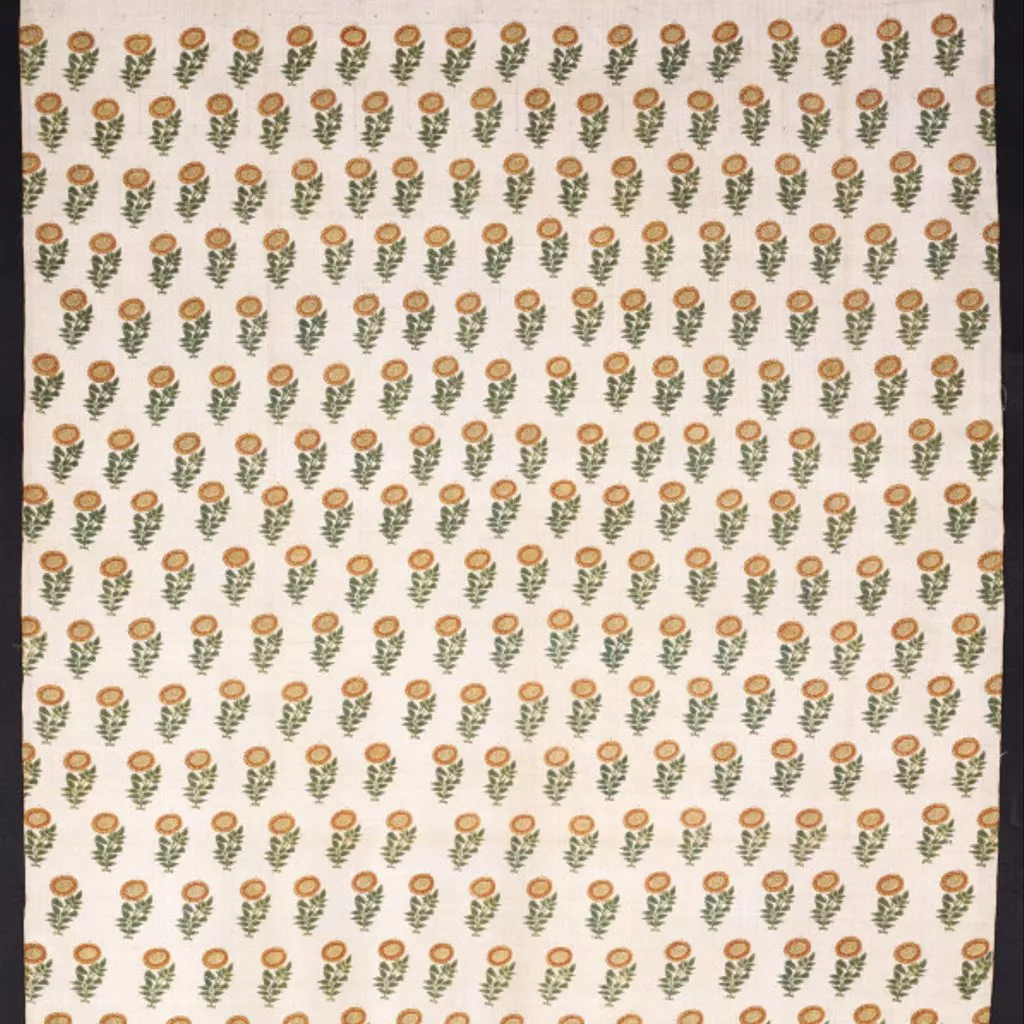1878, Leek
1878, Leek
- Identifier
- CIRC.502-1965
- Carried out by
- Wardle, Thomas (http://data.silknow.org/activity/designer)
- Collection
- Technique
- Depiction
- Floral motif 49%

- Floral motif 49%
- Dimension
- 124 cm (length)94.5 cm (width)
- Production time
- Production place
- Type of object
Description
The designer Thomas Wardle travelled extensively and collected patterns of many different origins. He took this repeating motif directly from a Museum publication of 1857. The pattern in the book, taken from a Persian (Iranian) original, was described as 'another example of the proper treatment of a natural flower type in ornament'. The Museum promoted such flat patterns as examples of 'good' design, suited to the decoration of fabrics or wallpaper. [27/03/2003] Thomas Wardle travelled extensively and collected patterns from many different origins; historical textiles he studied in Museums, archaeological sites he visited in the Middle East and Asia as well as printed sources. His greatest preoccupation was with the manufacture, dyeing and printing of silk. He attempted sericulture, examples of which are in the V&A's collection and he wrote extensively on the subject. The son of Joshua Wardle, a silk dyer in Leek in Staffordshire, he entered the family business on leaving school and by 1880 owned two print works; one for commerical dyeing and printing and the other for experimental work. Here he perfected the dyeing and printing of tusser silk, which has a textured surface which resists colour. This was achieved by first subjecting the silk to a bleaching process. This example, which dates from before he succeeded, has an undyed ground which shows the natural colour and texture of tusser. Dress fabric of block-printed tusser silk, Thomas Wardle, Leek, 1878 This block-printed tusser silk was produced as an experiment in design and technique. It was probably exhibited by Thomas Wardle (1831-1909) in the Indian section of the 1878 Paris International Exhibition. Wardle showed a number of patterns in this group, which presumably qualified on the basis that the silk grounds had been woven in India. It was acquired by the Museum from the exhibition. Thomas Wardle (1831-1909) travelled in the Middle East and Asia, studying manufacture and collecting patterns from many different sources, including museums and archaeological sites as well as printed sources. The repeating floral motif of sunflowers or marigolds in this pattern is taken directly from J.C. Robinson's Treasury of Ornamental Art (plate 19), published in 1857. The section is described as 'Designs for Textile Fabrics, reproduced from the Pattern book of a Persian Designer'. Among Thomas Wardle's greatest interests were the manufacture, dyeing and printing of silk, about which he wrote extensively. One of his achievements was the successful dyeing and printing of tusser silk, a textile with a textured surface which resists colour. This was achieved by first subjecting the silk to a bleaching process.





